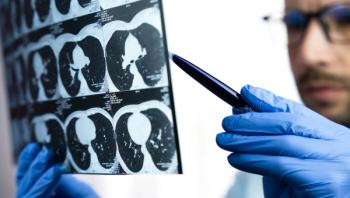
Advancing Equity and Access in Breast Cancer Care
Key Takeaways
- Black women face higher breast cancer mortality rates due to systemic barriers and social determinants of health, despite similar incidence rates to white women.
- Addressing disparities requires improving cultural responsiveness, integrating patient navigators, and eliminating cost-sharing for diagnostic imaging.
Experts reveal strategies to improve breast cancer screening and outcomes for underserved communities, addressing disparities during Breast Cancer Awareness Month.
Breast cancer remains one of the leading causes of death among women in the U.S.; however, significant disparities remain. According to the American Cancer Society, breast cancer accounts for about 30% of all new cancers diagnosed in women each year. In 2025, they estimate roughly 316,950 new cases of invasive breast cancer.
During Breast Cancer Awareness Month, experts revealed strategies with Managed Healthcare Executive that can improve screening and outcomes for underserved communities and the many affected by this cancer.
Ifeoma C. Udoh, Ph.D., executive vice president of policy and research for Black Women’s Health Imperative, shared that Black women and underserved communities face disproportionately higher mortality despite similar incidence rates compared to white women. In fact, Black women are 40% more likely to die from breast cancer compared to white women, Udoh said.
These gaps stem from systemic barriers, including limited access to early detection, follow-up delays and inequities in high-quality care. As Breast Cancer Awareness Month draws attention to these challenges, managed care leaders have an opportunity to drive change through policies, innovation and advocacy.
Understanding Disparities and Social Determinants of Health
Disparities in breast cancer outcomes are often tied to social determinants of health (SDoH) such as access to care, transportation and insurance coverage.
Udoh expressed that in these communities, SDoH greatly affect breast cancer outcomes, as they can be both “complex and interrelated.”
She gave an example of a Black woman in the rural South who may face limited local healthcare, long travel distances and work or childcare constraints that could force her to miss mammograms or follow-up appointments, noting how a “number of factors, and not just individual choices, can determine if, and when, a woman may receive care.”
Health systems can address these gaps by improving cultural responsiveness, integrating patient navigators and community health worker models, and educating physicians about health disparities, she suggested. Payers can also support patients by eliminating cost-sharing for diagnostic imaging after abnormal mammograms and reimbursing navigation services.
By tackling barriers that exist outside the clinic, providers and insurers can improve both access and outcomes. Although, some cancer centers are using data and technology to close those gaps.
At Yale Cancer Center, Maryam Lustberg, M.D., M.P.H., director of the Center for Breast Cancer at Smilow Cancer Hospital and Yale Cancer Center, said AI-based screening programs help identify patients who may be eligible for clinical trials. The center also trains clinicians to address unconscious bias in offering trials and treatment options, which can help ensure all patients have equal access to advanced care.
Screening Guidelines and Advances in Detection
Confusion over mammography guidelines further complicates early detection. Some recommend screening starting at age 40, while others suggest beginning at 45 or 50, according to Halle C.F. Moore, M.D., director of breast medical oncology at Cleveland Clinic Taussig Cancer Institute.
Moore noted that healthcare organizations should be innovative to provide access to diagnostic evaluation.
“For instance, offering screening mammography on weekends or after hours and use of remote radiologists are innovative ways that screening has been expanded,” Moore said, adding that patients with symptoms and those with abnormal screening exams can be prioritized for additional evaluation. “Patient navigators can also help patients to appropriate providers in a timely fashion.”
Breast density is also an under-recognized risk factor that can throw off mammogram results.
JoAnn Pushkin, co-founder and executive director of DenseBreast-info.org, explained that for the 40% of women with dense breasts, it both increases the risk of developing breast cancer and of having a cancer go undetected on a mammogram.
Pushkin added that technologies such as ultrasound, molecular breast imaging, contrast-enhanced mammography and MRI can detect cancers missed by mammography alone, increasing early detection and improving outcomes.
Advocacy, Policy and Employer Support
Advocacy and public awareness campaigns are essential in turning research into actionable outcomes.
“Advocacy and public awareness campaigns turn science into action,” Udoh said. “Even though there is still much to be researched in this area, the evidence that we have so far on how to improve screening rates and earlier diagnoses is a result of closing the loop between research and advocacy/policy.”
Udoh continued by saying that advocacy and public awareness campaigns can ensure communities are “receiving accurate, tailored information.”
Policy changes such as the USPSTF’s updated screening guidance, Medicaid expansions, cost-free diagnostic imaging and funding for community navigation programs can all help reduce disparities as well.
Pushkin highlighted recent national policy progress. She noted that new federal requirements now ensure that all women are told whether they have dense breasts and what that means for screening.
She added that the proposed Find It Early Act would require insurance plans to cover advanced imaging without out-of-pocket costs, helping more women get the care they need.
“Our (Breast Cancer Awareness Month) wish is that every patient receives appropriate breast screening based on their risk factors, including breast density, and adequate insurance coverage… and find cancer at the earliest stage possible,” Pushkin said.
Udoh suggested that employers and insurers can contribute by offering paid leave for mammograms, mobile mammography units, same-day diagnostics and reimbursable navigation services to reduce barriers related to time, transportation and costs.
Effective Programs and Community Partnerships
There are a number of initiatives that are demonstrating effective improvements in breast cancer screening for women, especially Black women.
Udoh highlighted the Project Health Equity initiative, a partnership between Black Women’s Health Imperative, Hologic, the University of Alabama at Birmingham and the Morehouse School of Medicine.
“Through this partnership, navigators provide culturally responsive support to help women overcome logistical, financial, and systemic barriers to breast cancer screening,” she said. More than 90 women in Alabama have already received screenings and identified barriers, including transportation, time off work, childcare and navigating the healthcare system.
Academic centers are also addressing equity through navigation, education and technology.
Lustberg shared that patients have more questions about treatment options, they are having better discussions of toxicities and they would like to engage in shared decision-making.
“There is still tremendous variability in level of patient engagement and support,” Lustberg said, adding that “patients who come in with an ally tend to feel more supported and have better engagement and adherence.”
Lustberg’s team invests in nurse navigators, unconscious bias training for clinicians, AI-based screening to identify trial eligibility and partnerships with community organizations to increase education and access.
While collaborations with payers are still evolving, employer partnerships are helping expand screening opportunities and patient support programs.
Looking Ahead
Closing breast cancer disparities requires a multi-faceted approach that combines innovation, equity-focused policies and robust patient support.
Experts urged that managed care leaders, insurers and employers can play a pivotal role by funding culturally responsive navigation services, reducing financial barriers, expanding access to advanced imaging and supporting community outreach.
As Breast Cancer Awareness Month highlights the importance of early detection, ensuring that women receive appropriate, timely and equitable breast cancer care is both a moral and essential responsibility for healthcare systems.
Newsletter
Get the latest industry news, event updates, and more from Managed healthcare Executive.





















































